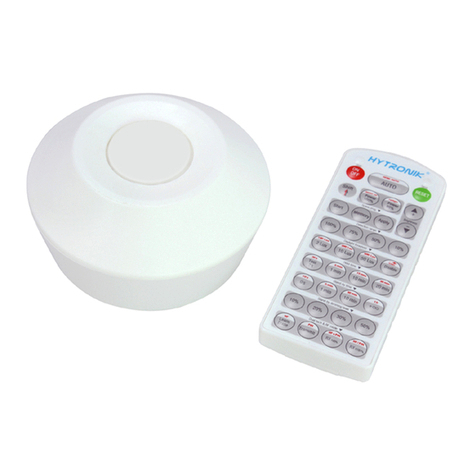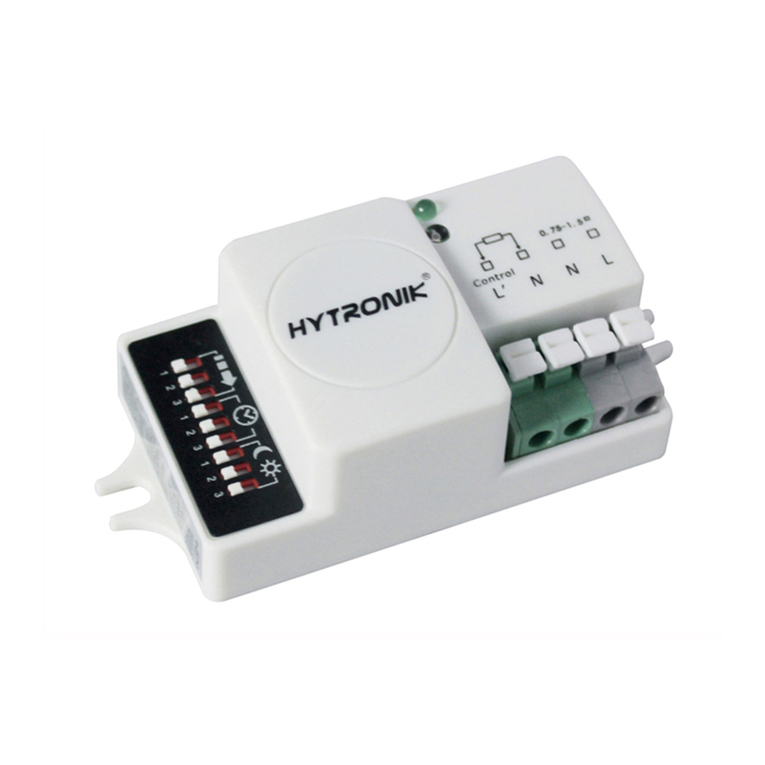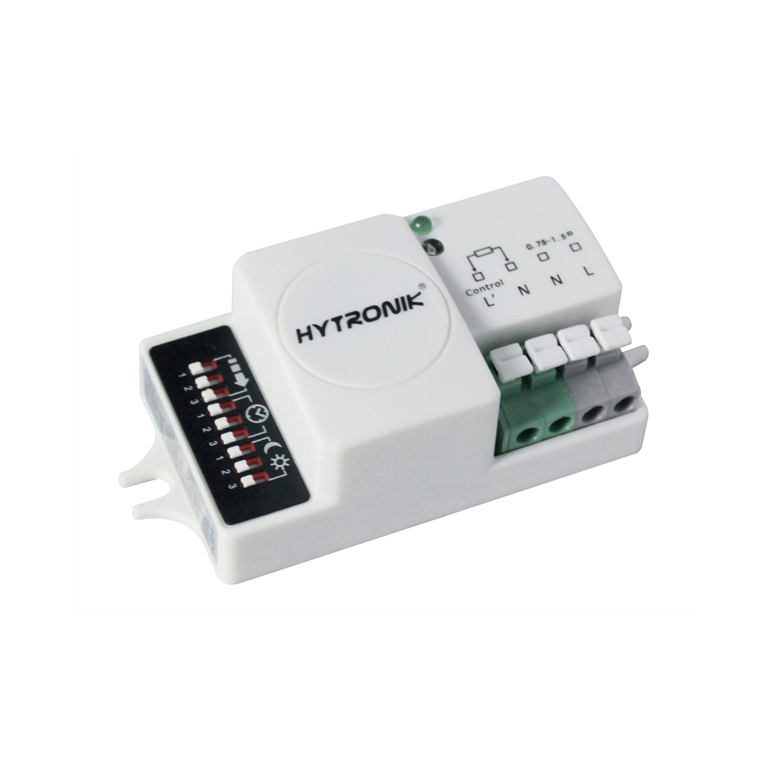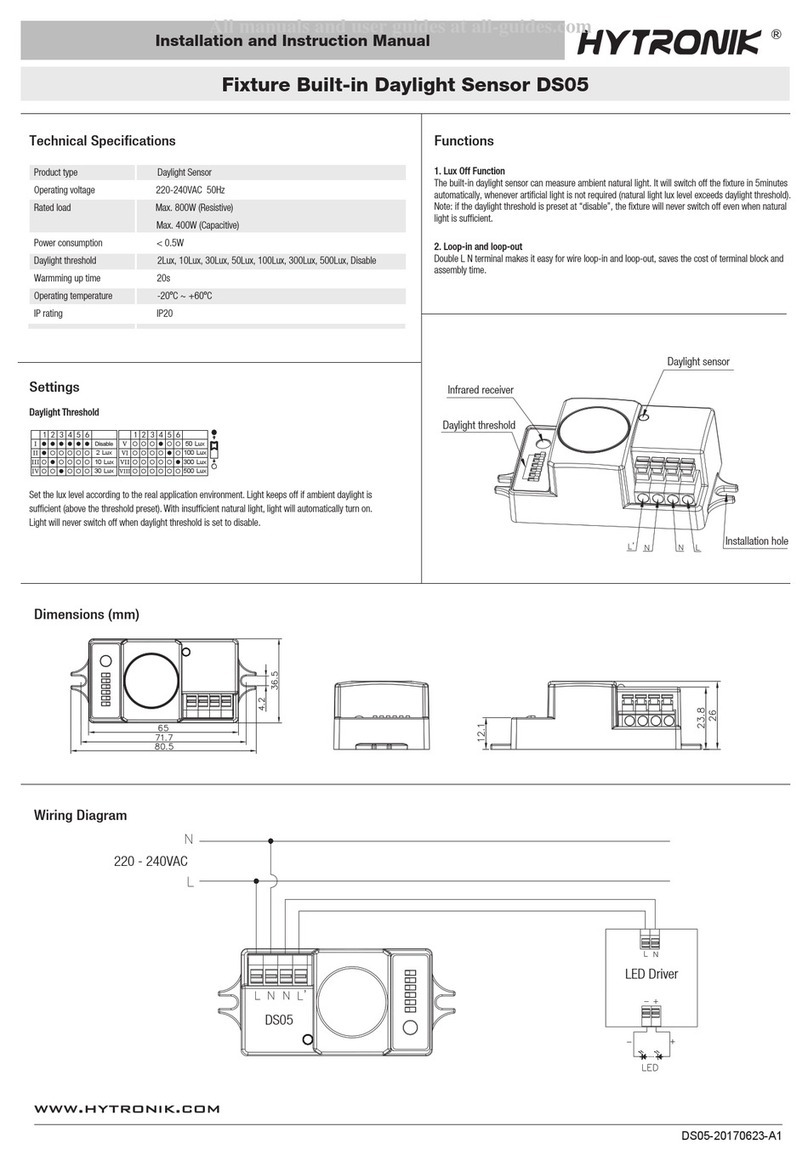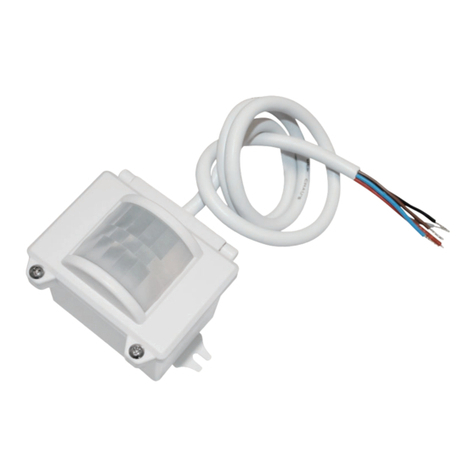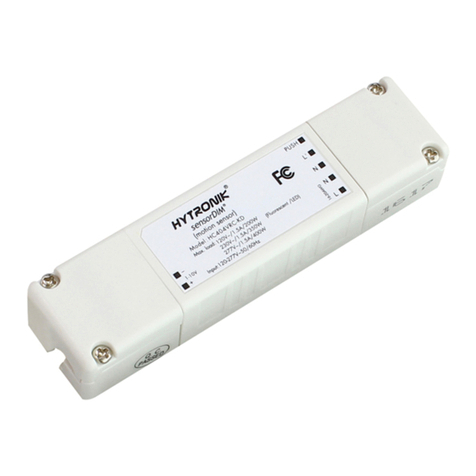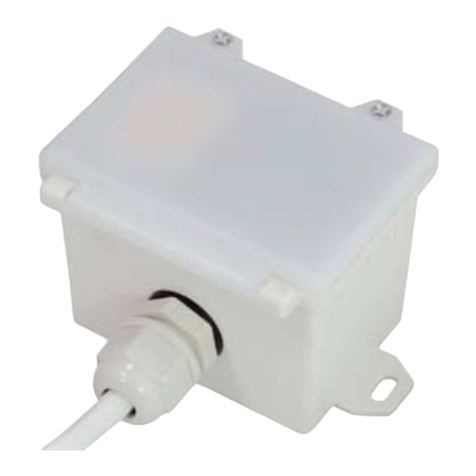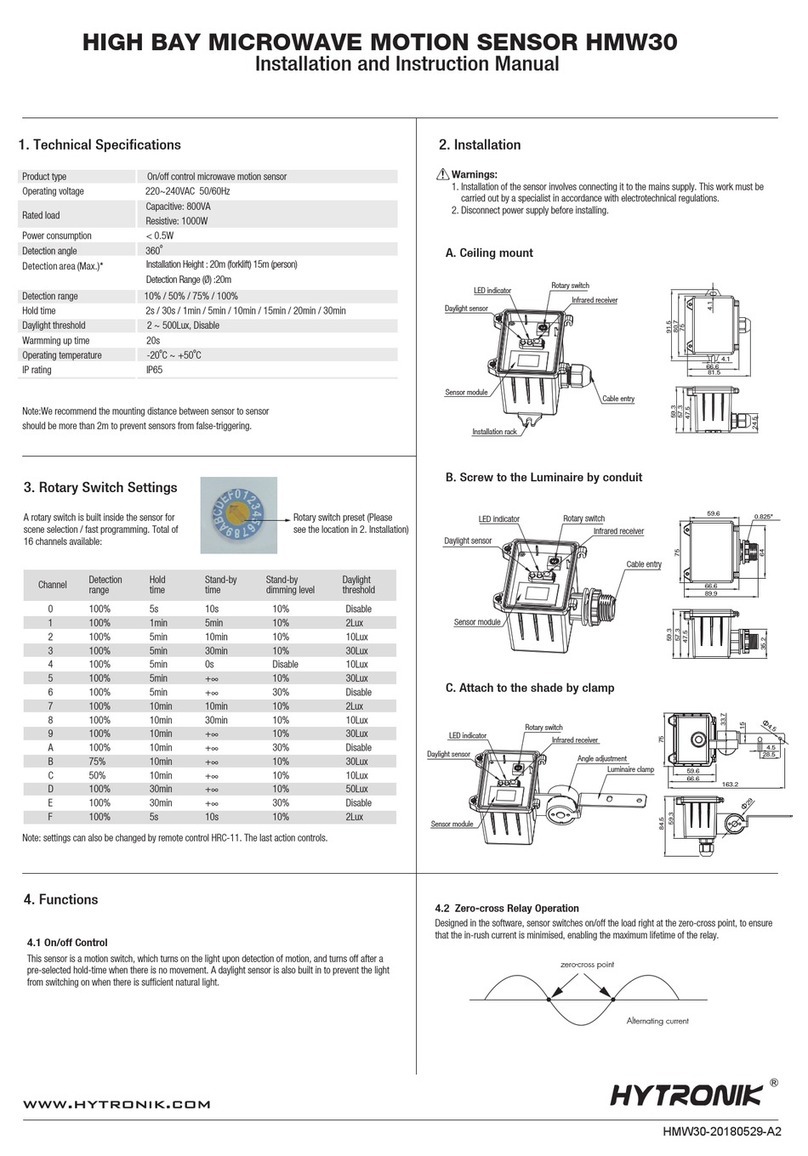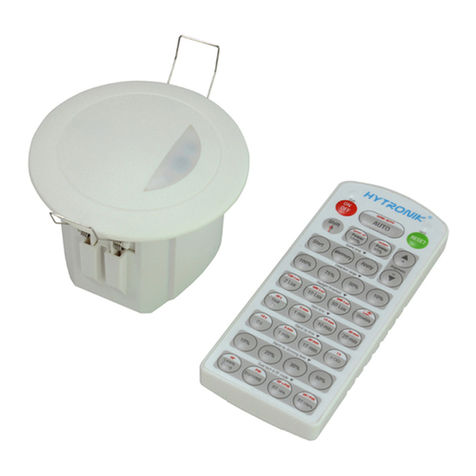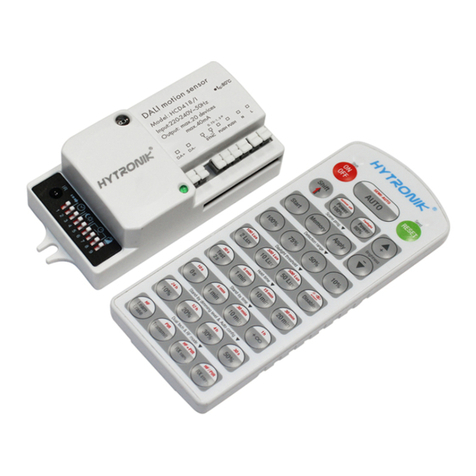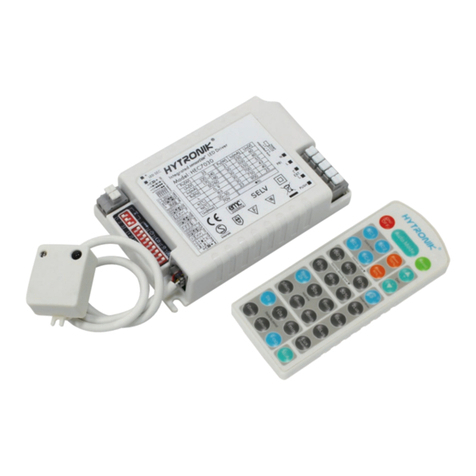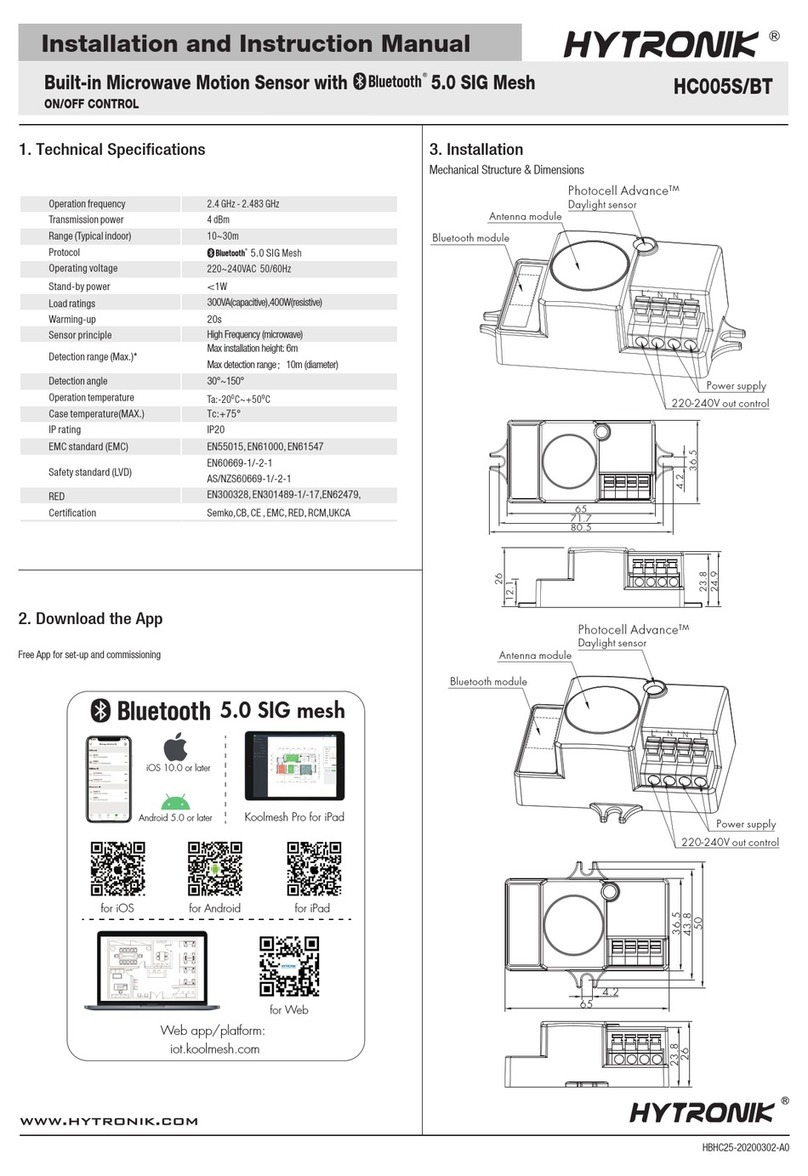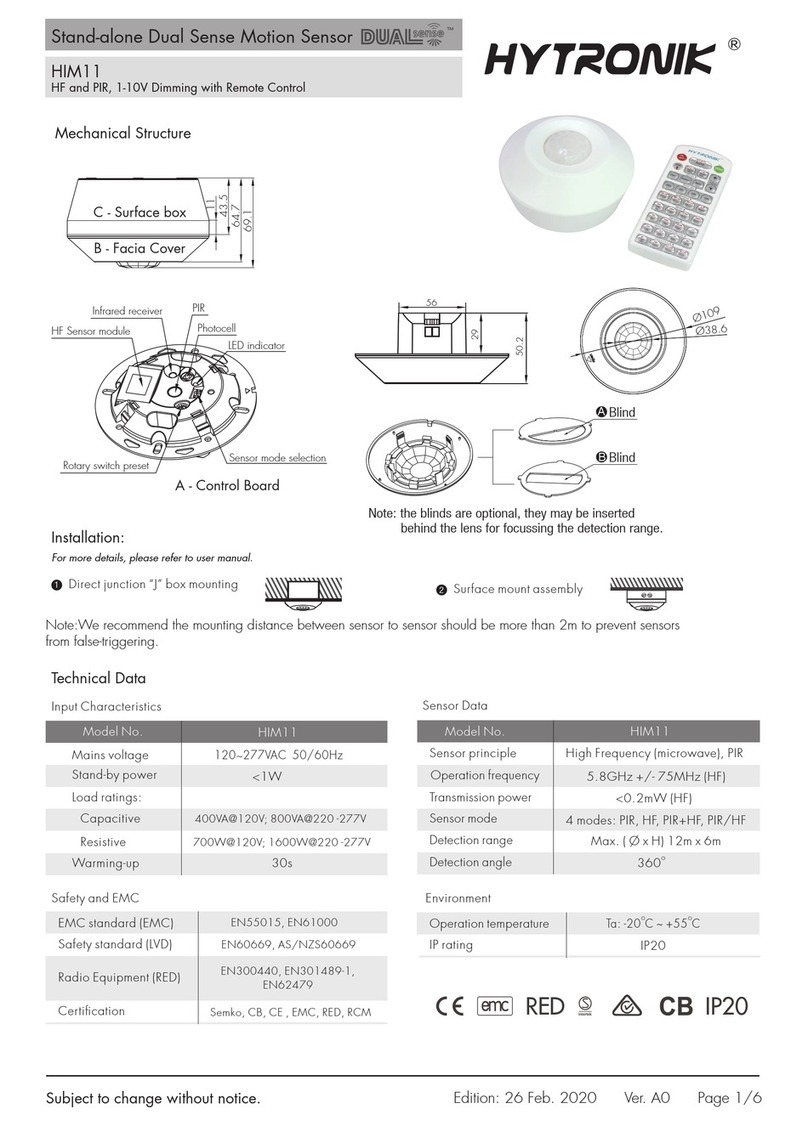
Subject to change without notice. Edition: 26 Feb. 2020 Ver. A0 Page 3/7
Synchronisation Function
3
By connecting the “SYNC” terminals in parallel (maximum 10pcs, see wiring diagram), no matter which sensor detects motion, all
HC019V/DH in the group will turn on the lights (ambient natural light is below daylight threshold). The detection area is widely
enlarged in this way while other settings such as hold-time, stand-by period, stand-by dimming level and daylight threshold on each
individual unit stay the same.
* Short Push (<1s): on/off function;
On →Off: the light turns off immediately and cannot be triggered ON by motion until the expiration of pre-set hold-time. After this
period, the sensor goes back to normal sensor mode.
Off →On: the light turns on and goes to sensor mode, no matter if ambient Lux level exceeds the daylight threshold or not.
* Long Push (>1s): adjust the target lux level by turning the light up or down. Both the adjustment on RC and push switch can overwrite
each other, the last adjustment remains in memory.
Note: if end-user do not want this manual override function, just leave the “push” terminal unconnected to any wire.
Manual Override
4
This sensor reserves the access of manual override function for end-user to switch on/off, or adjust the target lux level by push-switch,
which makes the product more user-friendly and offers more options to t some extra-ordinary demands:
Semi-auto Mode (Absence Detection)
5
Note: end-user can choose either function or function for application. Default function is manual override.
45
The light turns on full, and the sensor stays in
sensor mode.
The light does not switch on when there is
presence being detected.
Short push to activate the sensor
and switch on the light
People left, the light dims to stand-by level
after the hold-time.
The light switches off automatically after the
stand-by period elapses.
The light keeps being ON during the presence.
It is easy to forget to switch off the light, in ofce, corridor, even at home. And in many other cases, people do not want to have a
sensor to switch on the light automatically, for example, when people just quickly pass-by, there is no need to have the light on. The
solution is to apply this “absence detector”: motion sensor is employed, but only activated on the maunal press of the push switch, the
light keeps being ON in the presence, and dims down in the absence, and eventually switches off in the long absence.
This is a good combination of sensor automation and maunal override control, to have the maximum energy saving, and at the same
time, to keep efcient and comfortable lighting.
